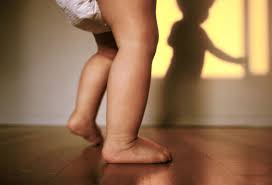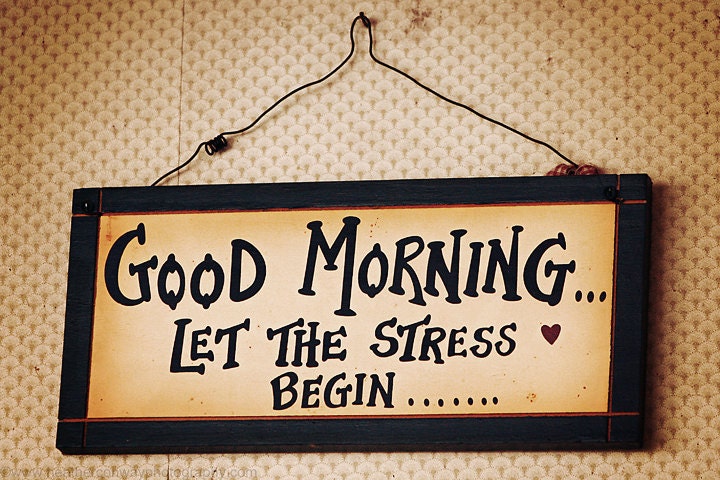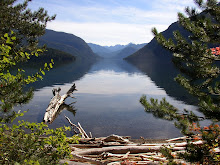Yesterday as I began traveling to see my sister, brother in-law, and my seven week old nephew in Redding, CA, I thought about why I was so excited to be an uncle. I love kids, not simply because they are fun to be around but because of what they draw out in me. In many ways I grew up too quickly, and being around children has provided a way to “grow young” in rediscovering and pursuing my passions. Here are just a few lessons they have taught me:

1. Express yourself
As we get older, there is an expectation that we should become self-aware, making us more careful and conservative in how we express ourselves. Some kids adopt this norm sooner than others, but I applaud the ones who cherish their freedom “to be a kid” and hesitate to throw in the towel. When I was a counselor of 2nd and 3rd graders, several of them were already hesitant to express themselves. Thankfully most of them were content to be kids, evidenced by their the volatile emotions and actions: screams of panic, yells of delight, huge hugs, jumping high-fives, guttural noises of disgust, sudden silence of anticipation, wild flailing arms, tears over a lost toy, creative costumes, and fiery faces fuming with frustration. Subtlety was a foreign word to them. Dancing was one specific avenue I continually encouraged them to feel free to look ridiculous and “let it all out”. Part of this was for them, but part of it was for me too. As I walked to the stereo and selected their favorite sons, I would shed my veneer of “adulthood and maturity.” Each kid had something unique to offer, whether it was Will’s intensity in “Eye of the Tiger,” Sadie’s passionate singing “keep keep bleedin your love,” AP’s breakdancing or Alessandro’s moonwalking tribute to MJ . Dancing, like any other form of expression, was a tangible reminder that we are made to enjoy, not manage, life.
“Your playing small does not serve the world. There is nothing enlightened about shrinking so that other people won't feel insecure around you. We are all meant to shine, as children do." - Marrianne Williamson

2. Though simple, curiosity has a beauty and power
Early in life I convinced myself that people did not really want to know the “whole” me. Due to my wide range of interests, I floated between social groups and developed a habit of sharing only the pieces of myself I thought were palpable to others or relative to the conversation. These gave glimpses into who I was. It wasn’t until college that anybody called me out on this. But often kids yearn to know people from the moment they enter a room. The promise and power of a child’s lack of inhibition strikes fear into most adults when they enter a room. Both they and the child poise to interpret reactions, eager to evaluate their expectations, carefully ‘calculating’ like an iphone processing an app. Kids can spot discomfort in seconds from a mile away. An adult’s comical glance or warm smile is often enough to signal acceptance. At this point, the adult should know they have surrendered themselves to a torrent of questions since they are not intimidated by the breadth or depth of anyone’s identity-whether a car salesman or a cultural anthropologist. They ask questions incessantly to know the “whole” you: your job, toothpaste preferences, crazy pranks, amazing adventures, scary moments, epic failures, embarrassing experiences, teenage crushes-they wanted to know it all. This curiosity is beautiful because their questions invite relationship, they reach out to touch us to close the gap of age and experience and confirm that we are the same. They eagerly watch for a reaction, and a smirk, a pause, a blush, or even a twitch ito prove our humanity. This curiosity is powerful in its ability to disarm us and reveal who we really are. Like a contagion, it makes us increasingly sensitive and vulnerable evidenced by how adults often are more explicit and open with kids than each other. The beauty and power of children’s curiosity is fed by an insatiable capacity to wonder, which sadly diminishes as we get older.
“The world will never starve for want of wonders, but for want of wonder”-Blaise Pascal

3. Recalling out First Steps: Gravitational Principles
Often when I am coaching runners about the importance of form, I remind them of learning to walk for the first time. Half of them line up on a line and the other half watch to see which part of their partner’s body moves first when they begin walking. Besides those who are joking around, they all notice that the chest moved first. Something had to propel the body forward, which in this case meant utilizing gravity. Movement begins by falling. This is what makes our first steps so scary-suspending control and surrendering ourselves to unknown forces. When you see a baby bobble and sway side to side on chubby little feet that are hesitant yet eager to rise in one place and fall in another, there is both hope and fear. Gravity offers its own life principles:
1. Life is full of risks, bumps and bruises are inevitable and pain is a gift. We are designed to learn more from falling than from standing. By not walking you are missing out on life and others miss out on discovering all you were designed to be.
2. Seeing and knowing where you will put your feet helps. Have a sense of direction and purpose with each step, however small.
3. Small steps come before big steps so start with small risks and small goals
4. Learning to walk happens faster when you are not alone. True community provides support when you take risks
5. Walking happens before running so remember that mundane decisions always come before exciting ones, master the basics and you’ll be better prepared for the fun.
6. Walking off a step is more hazardous than walking on a flat surface so remember that context always influences the impact of even identical risks.
7. When you walk downhill you can see further, need less energy but also have less control than when you walk uphill. Simple decisions are easy to make but often have hidden instabilities we are unprepared for. Hard decisions require more effort but we benefit from inherently taking smaller steps that are manageable. If you’ve overextended your step going uphill, anatomically you know you can compensate more easily than when you are going downhill. We are more prepared to react fast to trouble in hard decisions than easy ones.
8. Running is so much more fun than walking, but it is more tiring. We are designed to enjoy life but we have to work to do it well. If all you do is work, you will burn out. If all you do is enjoy life, it becomes static and empty. The more you learn the skill of running by discovering and pursuing your unique interests and passions, the stronger your joy will be in life.
9. Each of us walks differently, no stride is perfectly alike. Whether we walk or run, it doesn’t need to be in the same direction or with the same purpose. “Finding your stride” takes a while.
10. For a step to be a success you only need to have moved somewhere new. Taking risks doesn’t always need to be a show. Normally it isn’t after we’ve had a few steps that we realize how far we’ve come.
This morning my nephew was not walking or talking, but he was expressing himself in any way he could. Rolling his head to the opposite side was a huge victory for him and relief swept across his face after getting a fresh diaper. It is amazing how these simple actions become significant when they are significant to one person. As I hold him, we each are getting comfortable with each other and both of us are learning from each other. Kids, like anything valuable in life, are messy, costly, complex and mysterious but totally worth having. For now I’m happy to just be an uncle.



































